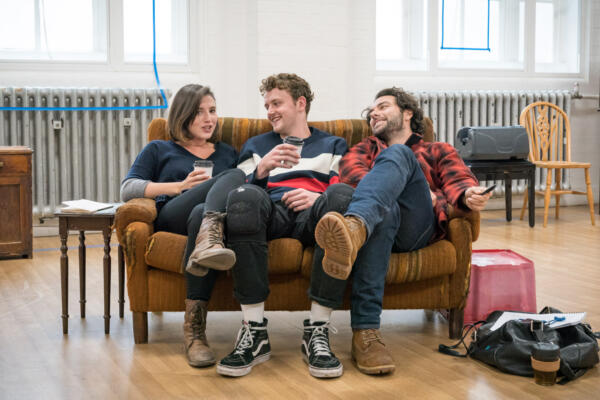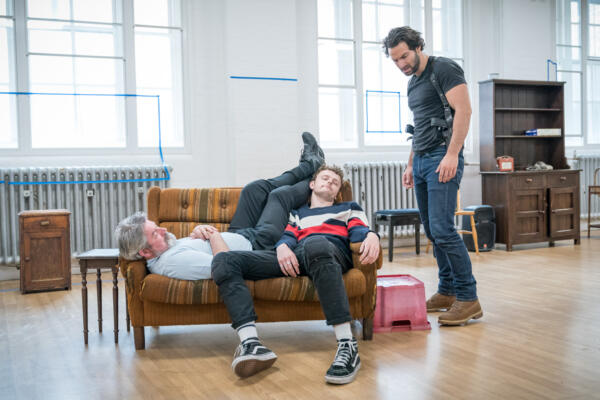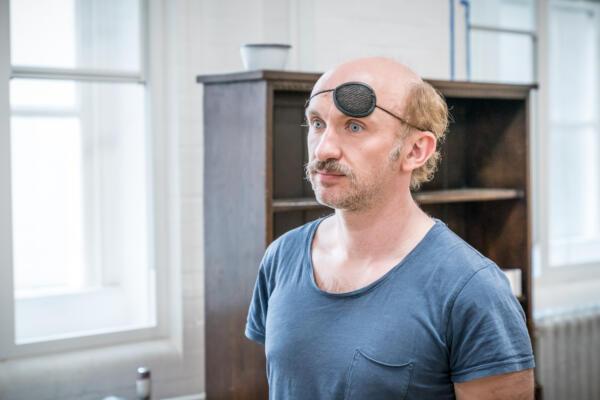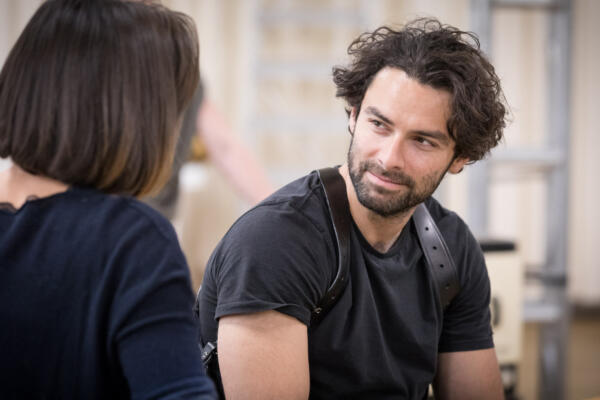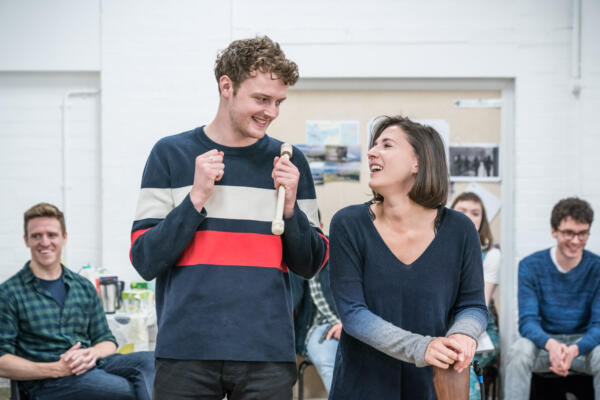The Lieutenant of Inishmore | Inside the Rehearsal Room
The Lieutenant of Inishmore– Week One, Day One
Education Associate Dominic Francis provides an insight into the cast and Creative Team’s rehearsal process for The Lieutenant of Inishmore
It’s the first day of rehearsals for MGC’s production of The Lieutenant of Inishmore by Martin McDonagh and for this week only the cast and Creative Team are based in the rehearsal rooms at the Lyric Hammersmith Theatre in West London. Next week they’ll move across town to the more familiar Jerwood Space for the remainder of the five weeks’ rehearsals.
Director Michael Grandage welcomes everyone and the team briefly introduces themselves and their part in the production. Everyone then gathers around the model-box while designer Christopher Oram outlines the design concept. He explains that the set is based on a composite of various remote Irish cottages. There’s a screen at the front depicting an aerial view of the island (Inishmore), the fields divided by stone walls and lanes.

Michael clarifies that the model-box is built to 1:25 scale, which he says can often confuse people: ‘Some actors are always surprised when they walk on set. They say, “I didn’t think it would be like this”. Well, it’ll be exactly like this only twenty-five times bigger!’
Briefly outlining the plan for the next couple of weeks’ work, Michael explains that the Armourer, Mark Shelley, will be in rehearsals from the start of week two to show the cast how to hold and handle the various guns. At the end of the ‘Meet and Greet’, while the wider Creative Team leave, Michael, Christopher and author Martin McDonagh stand in front of the model-box discussing the practicalities of staging the play. Costume Supervisor Mary Charlton takes advantage of this time to start taking the actors’ measurements.
Once the wider team have left, Michael and the cast sit around a large table in the centre of the room while Stage Management and other members of the team, including Composer and Sound Designer Adam Cork, sit on chairs lining the walls ready to listen to the readthrough. Michael wants to start with this before discussing the play so ‘the chat’ can come out of the readthrough. He reassures the actors: ‘It’s not a test. Throw yourselves at it. Keep it alive, energised.’ Before they begin, Michael clarifies how to say the title: ‘The Lew-tenant of Inishmore’, as in the American pronunciation.
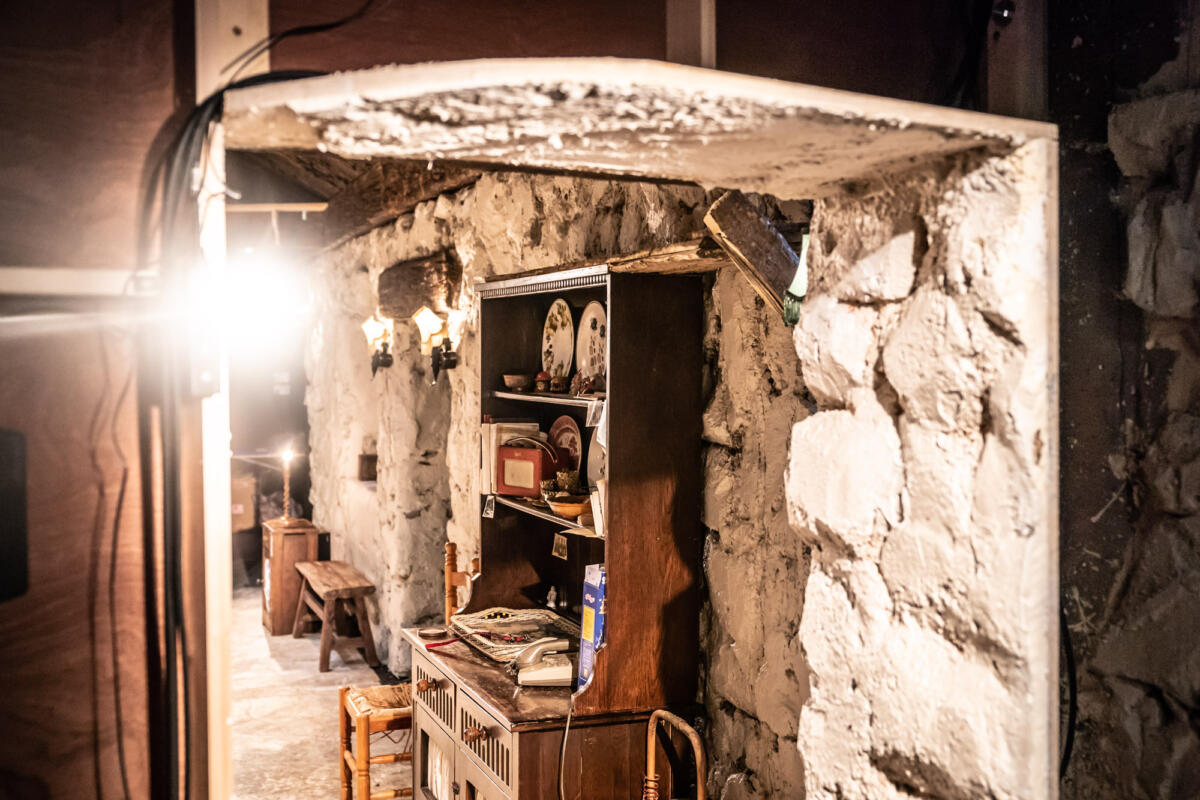
Following the readthrough there is a short break and when the cast reconvene Michael congratulates them: ‘A very, very good reading. As a collective insight it was very good.’ It was noted that Charlie Murphy, playing Mairead, was reading from a published version of the play, which contains cuts that Martin wants to keep. He also makes several new revisions to the text – for example, Padraic’s age is adjusted from 21 to 25. Michael reflects on the setting of the play in terms of the date, circa 1993. It’s agreed that it’s important that the play’s set before the Good Friday Agreement of 1998. ‘One general note,’ adds Martin, ‘if there’s a comma, ignore it. Commas aren’t pauses. Just try and get to the full-stop at the end.’
‘To my ear the accents sounded right,’ says Michael turning to Martin. He agrees, then refers to the song ‘The Patriot Game’, sung by Mairead and Padraic, commenting he has a recording of an older version of the song, which he prefers, that he’ll send to the actors. Adam, who has a different version of the song, also asks for this.
Acknowledging Martin’s presence, Michael says: ‘It’s a rare opportunity to have the writer in the room.’ He invites the cast to join him in asking Martin questions about the play, in particular about their characters. Martin begins by explaining the context in which the play was written. It was 1994 and at that stage he hadn’t had anything performed. The National Theatre gave him a writer’s residency at the NT Studio and he recalls sitting in a room wondering what he’d write about: ‘I had a vague idea of a really tough gangster who had a cat. I wanted to write about “The Troubles”. I was brought up a Republican and a Catholic. I thought I’d look at the other side. It was my angriest thing. It’s a play that comes from anger. It can’t be played for laughs. When the guns go up it’s always serious – you could die at any moment.’
Reflecting on this, Michael observes: ‘Tonally we don’t think of it as a farce.’ He considers the nature of rehearsing plays that have comic elements, however dark: ‘In the rehearsal room we can only do what we can – we won’t have an audience laughing.’
They then consider the practical details of staging the play, which contains animals and firearms. For the majority of the time, the cat on stage is a fake cat with an animatronic tail. The only real cat, reveals Michael, appears at the end. From his experience of previous productions of the play, Martin comments: ‘The cat being a little bit hungry means it stays near the food.’ This prevents if from wandering about the stage. ‘Unless we’ve got a diva cat!’ quips Michael.
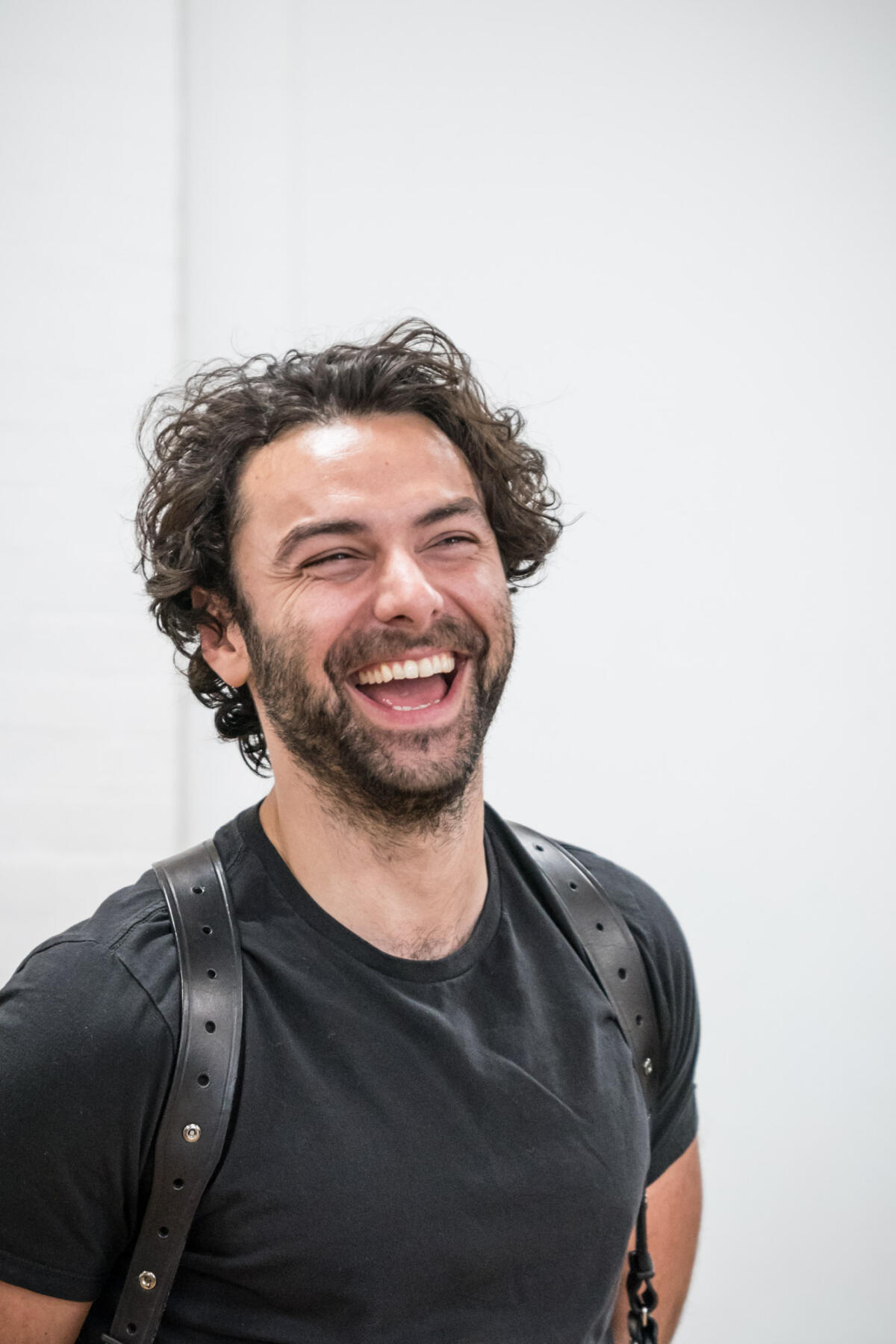
‘How do the guns work with everything going off?’ asks Aidan Turner, who plays Padraic. Michael takes the firearms and shootings very seriously and refers to the fact that gun control on stage has changed in recent years. He didn’t want to introduce the guns this week as the actors have enough to think about, which is why the Armourer will be in rehearsals from the start of next week.
Thinking about the significant use of weapons within the piece, Michael comments: ‘I’m keen that this is a message we’re talking about – a play that deals with the banality of violence.’ Martin refers to ‘pacifist rage’ and adds: ‘There isn’t a play that ever killed anyone. I wanted to write a play like a bomb – it should make people angry.’
The cast continue to ask questions about their characters. Denis Conway, who plays Donny, asks: ‘Is Donny as stupid as Davey?’ Martin is unequivocal in his response: ‘There’s no one stupid in the play. No one ever thinks of themselves as stupid, but they can think of themselves as superior.’ Referring to the moment when Donny asks Davey whether he should remove an incriminating name-collar from a dead cat’s neck, Martin suggests the question is a genuine one – ‘It’s drunken innocence.’ Daryl McCormack, who plays Brendan, is keen to know how politicized the characters are. Michael and the actors clearly welcome the opportunity to have such discussions with Martin present. ‘The challenging thing is there’ll be a hundred and fifty questions each day!’ says Michael. Martin reassures them that he’ll be on e-mail and can continue a conversation that way.
Michael outlines the first week’s work: ‘I’m going to work through the play quickly, in a sketch-like way, to get through everything by Thursday. I’m not a fan of table work because I think it makes it difficult to then stand up. Being physical and talking about the play happens in tandem. If we do this broad brushstroke technique without too many questions you go away for the first weekend with a broad shape.’ Looking further ahead, he says: ‘It all comes together in the fifth week.’ In terms of the daily routine, Michael explains: ‘I tend to only work on the scenes with the actors in them in the room. This can make call-times more challenging.’
In terms of the actors’ individual creative processes and their imaginative exploration of their characters, Michael comments: ‘Back-story never killed anyone, and you can always cut back-story if it doesn’t work.’ He’s clear about the respective roles within the process, pointing to Martin: ‘He’s the creative artist and we’re (the cast and Creative Team) the interpreters. But we’re an interpretative artist with a huge creative brief.’
Breaking for lunch, Michael says: ‘We’ll have a little more chat after lunch and then we’ll start sketching.’ While the cast is absent from the rehearsal room for an hour, Stage Management completes the mark-up in the space.
